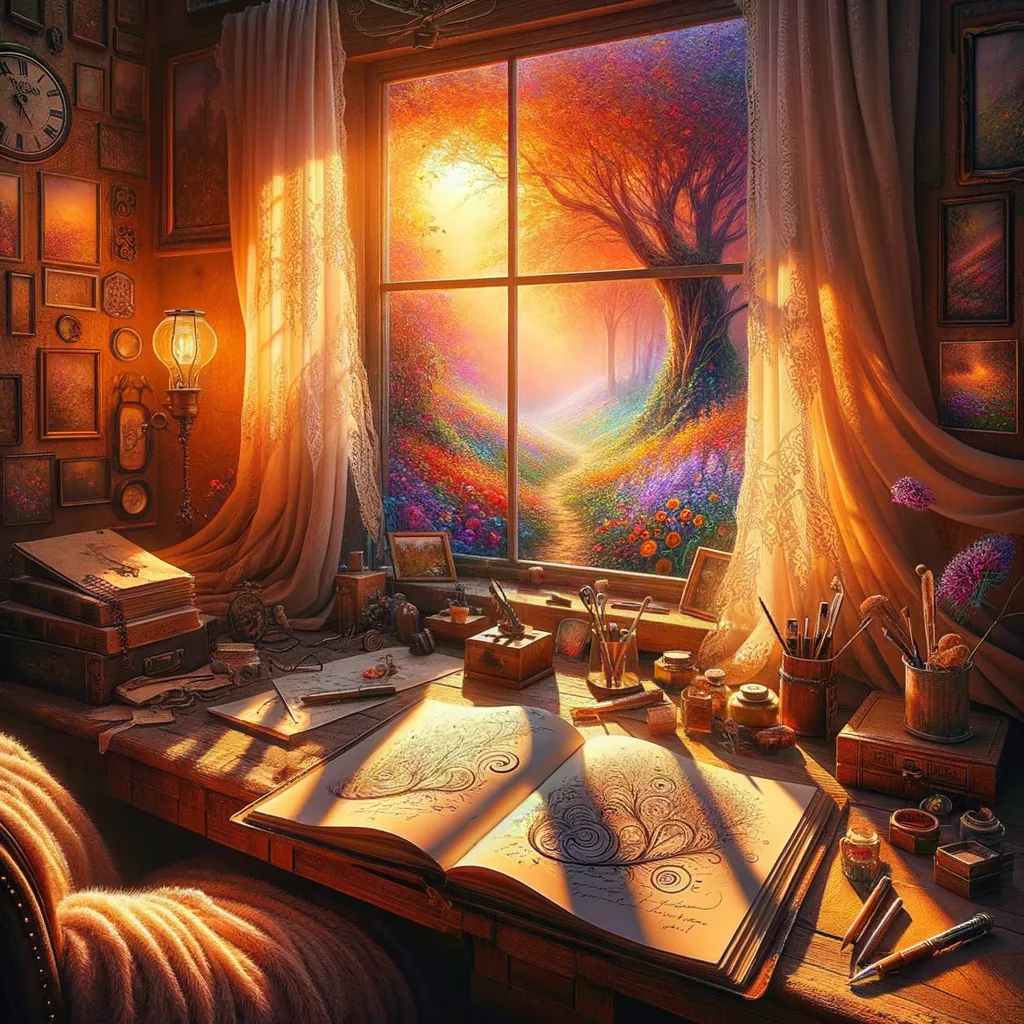From Letters to Screens: Rediscovering Human Connection
In a quaint café, a moment of nostalgia unfurls as the protagonist reflects on a time when laughter filled the air, and handwritten letters carried the weight of intimacy. As the digital dawn breaks, friends huddle around glowing screens, and a wave of unease washes over, signaling the end of an era where genuine connection thrived in shared smiles and warm conversations. The arrival of social media, akin to Pandora’s box, stretches friendships across vast distances yet leaves a haunting emptiness in its wake, transforming depth into mere emojis and likes. Amidst this digital maze, unexpected pockets of authenticity emerge, revealing that technology can still foster genuine connection if wielded with intention, inviting vulnerability and creativity into our lives. Ultimately, the protagonist grapples with a profound realization: the true essence of relationships lies not in the tools we use, but in our commitment to remain present, ensuring that love and laughter endure beyond the confines of screens.
In the memory of February 10, 2000, I find myself wandering through the threads of my past, a time when communication was both simpler and infinitely more complex. The world was on the cusp of a digital revolution, yet my closest relationships were still tethered to the warmth of handwritten letters and the thrill of a shared smile. Each interaction was a tapestry woven with the fibers of face-to-face laughter, the sweet scent of coffee shared in quiet corners, and the reassuring sounds of live conversation. Little did I know that this era was about to become a distant echo, replaced by the rapid rise of technology that would redefine intimacy itself.
As I sat in my favorite café that day, I watched friends huddled together, their faces illuminated not by the golden glow of sunlight filtering through the windows, but by the bluish light of their newly acquired cell phones. They scrolled, tapped, and swiped, engaging with a virtual world that seemed to beckon louder than the voices around them. A flicker of unease danced in my heart; what would become of our shared moments, those sacred pauses filled with laughter and unfiltered emotions? That day marked an unspoken shift—a transition from presence to pixelation.
The arrival of social media platforms in the years that followed was akin to opening Pandora’s box. Suddenly, relationships stretched across continents, and I found myself connecting with old friends whose faces I could barely remember. Yet, in this vast digital landscape, I often felt a haunting emptiness. The depth of conversation transformed into a series of likes and emojis, fleeting gestures that lacked the warmth of a hug or the sincerity of eye contact. The richness of relationships became a mere reflection on a screen, a ghost of what once was.
Amidst the whirlwind of hashtags and statuses, I discovered a peculiar irony. While technology had the power to connect us globally, it simultaneously erected barriers in our immediate surroundings. I began to observe the subtle yet profound changes in my friendships. Shared moments became overshadowed by the need for validation in the digital realm. The laughter that once echoed through my living room was now punctuated by the dull hum of notifications, a constant reminder that I was never truly alone, yet always isolated.
However, amidst this digital labyrinth, pockets of authenticity emerged, surprising me in their resilience. Video calls became a lifeline during times of separation, allowing us to bridge distances with the warmth of seeing familiar faces. I found solace in the realization that technology, despite its pitfalls, could be a canvas for creativity and connection. We began to share not just our lives, but also our dreams, fears, and vulnerabilities in ways that were once unimaginable. Suddenly, the screen became a portal, inviting intimacy through shared experiences, even if they were filtered through pixels.
Yet, as I navigated this duality, I felt a creeping dread. The very technology that promised to enrich our lives also became a thief of moments. I watched as friends became engrossed in their devices during gatherings, their laughter replaced by the hurried taps of their fingers. Conversations dulled, and the art of listening seemed to fade into obscurity. It was a tragic irony: the more connected we became, the more alone we felt in our shared spaces.
On a particularly poignant evening, I found myself at a gathering where laughter rang out like music, yet I felt an unsettling disconnect. As I glanced around, I noticed a group huddled in the corner, their heads bent together, but their eyes glued to their screens. It struck me then—the irony of our era. We were physically present yet emotionally absent, drowning in a sea of digital distractions, missing the very essence of what it meant to be together.
In this dance of technology and relationships, a profound realization settled in. The true challenge was not in the tools we used, but in our ability to wield them with intention. Relationships flourished not merely through the act of connection, but through the art of presence. With every swipe, there was an opportunity to choose to engage deeply rather than merely exist in parallel. This was the unexpected twist in my journey—a reminder that while technology could alter our interactions, it could not extinguish the flame of genuine connection if we chose to nurture it.
As I look back on that pivotal day in February 2000, I am left with a lingering question that resonates through the years: In a world increasingly defined by screens and signals, how do we ensure that our most cherished relationships remain vibrant, meaningful, and authentically human?
In a world where screens dominate our interactions, the true challenge lies not in the technology itself, but in the conscious choice to cultivate presence and authenticity in every connection.



